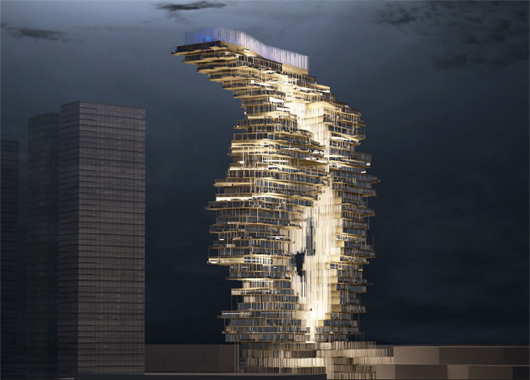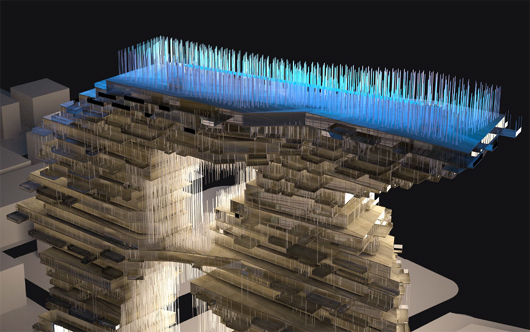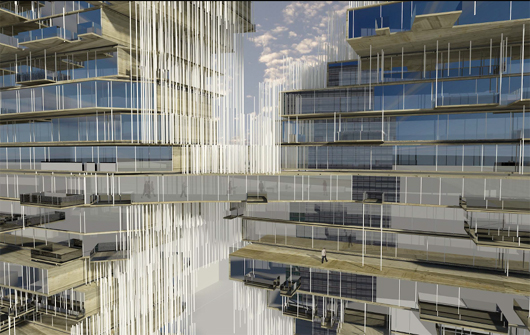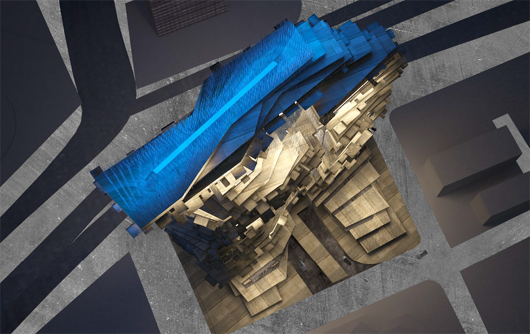Bluarch architecture + interiors + lighting designs a new tower in downtown Miami

Antonio Di Oronzo, principal of bluarch architecture + interiors + lighting designs a residential hybrid tower in downtown Miami. Continuing his ongoing research on sustainability, Antonio Di Oronzo of bluarch architecture + interiors + lighting explores once more viable models of integration of the high-rise building typology with infrastructure. Therefore, they have designed this residential tower Miami as a hybrid.
From bluarch:
The notion that being ecologically sound simply entails seeking alternative energy sources and energy savings is at once partial and simplistic. As the earth population multiplies [now at 7 billion], we must recognize the need for a layered strategy that both pursues alternative energy sources and actively diminishes the current level of pollution. This project focuses on the latter aspect by proposing to use the otherwise unused real estate of a building to scrub CO2 from the atmosphere.

The tower's architecture integrates a new technology developed by Colombia University Professor Klaus Lackner and referred to as an “artificial tree”. A series of resin columns is organized on all available areas of the tower that are exposed to the prevailing winds. As the wind blows through these resin columns, carbon is trapped in a chamber between the double slab at each level of the tower; the carbon is subsequently compressed and stored as liquid carbon dioxide in the cellar levels. The gap between the two slabs between the two floors also allows for cross ventilation that cools the floor slab of one unit and the ceiling slab of the one below. As the CO2-scrubbing columns better work when wind is present, the tower opens up in the middle to accelerate air speed as it travels through the gap.

The building is comprised of two cores each serving 4 to 6 units per floor. The two wings of the tower connect at the bottom [lobby] and at the top, where the last five storeys are designed for multi-level units and amenities. The bottom 6 storeys house the parking structure, which continues underground, where the envisioned grid for distributing the liquid carbon dioxide is also located.

The entire glazing system of the building is covered with a thin-film solar cell (TFSC) by Nanosolar. This technology allows for a thin-film photovoltaic cell (TFPV), to be deposited in thin layers (thin film) on a substrate. This system alone makes each unit self-sufficient in terms of energy needs. Further, the slender profile of the tower and its siting also contribute to the energy efficiency of the building, which is oriented to take advantage of prevailing winds and day lighting.

As the wind flows through this diaphanous building, the levels shift, vibrate in a progressive cantilevering. As the sun travels over the ocean, the building shimmers in a dance.


News Infurma:
Online Magazine of the International Habitat Portal. Design, Contract, Interior Design, Furniture, Lighting and Decoration
